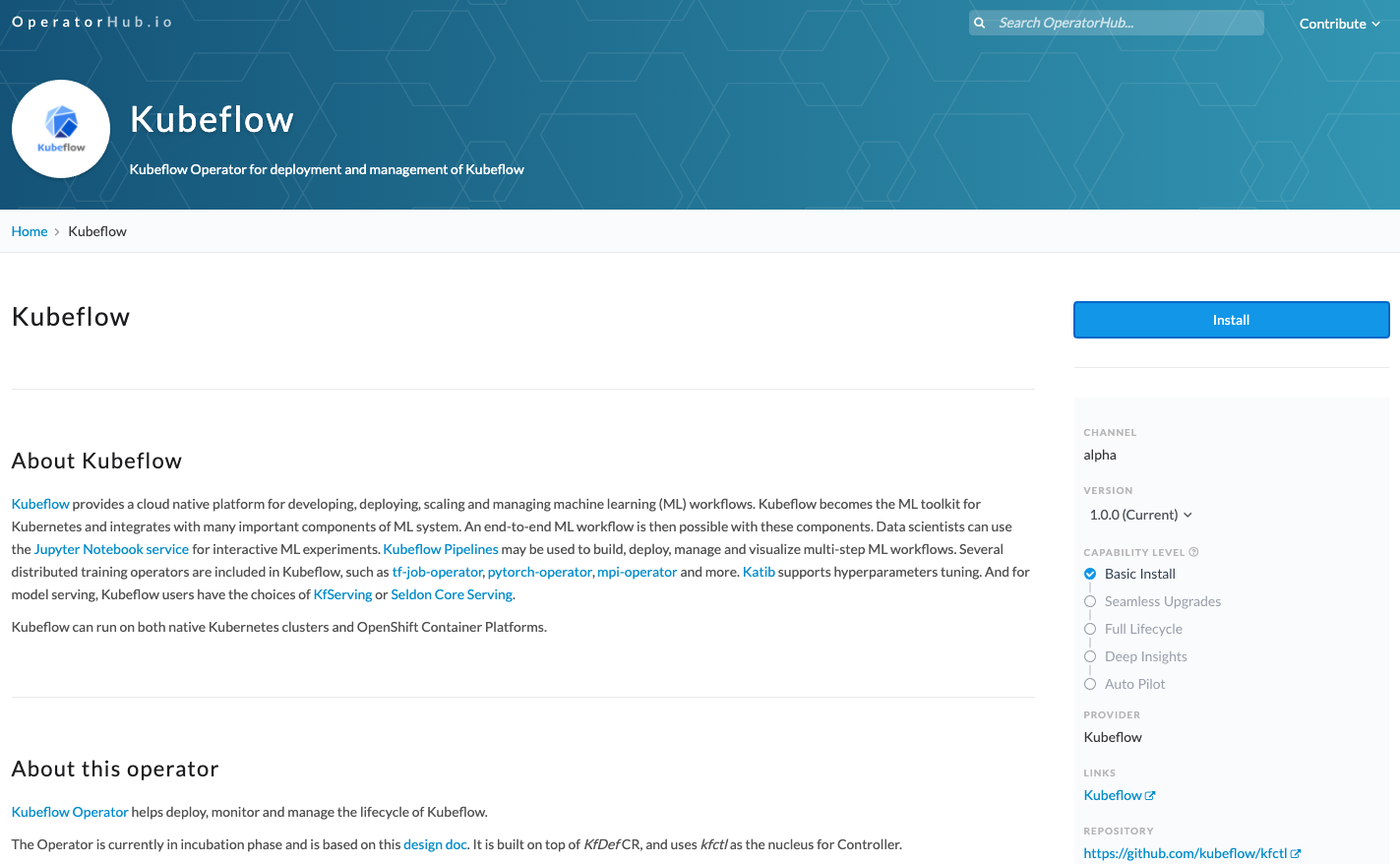Installing Kubeflow Operator
This guide describes how to install the Kubeflow Operator.
There are different ways to install the Kubeflow Operator, choose one of the following:
1. Installing the Kubeflow Operator through the operatorhub.io
The stable release of Kubeflow Operator is published to the operatorhub.io. Navigate to the operatorhub.io, click on the Install and follow the instructions there to install the operator.

Verify the Kubeflow Operator is running with following command.
kubectl get pod -n operators
NAME READY STATUS RESTARTS AGE
kubeflow-operator-55876578df-25mq5 1/1 Running 0 17h
2. Installing the Kubeflow Operator with kustomize and kubectl
Previous method is convenient and simple enough without any knowledges of the Operator SDK. However, if any of the following reasons applies, choose this approach to install the operator.
- You want to install a different release of Kubeflow Operator since the Kubeflow KfDef manifests may not be compatible from release to release.
- You want to install the latest release of Kubeflow Operator.
Prerequisites
- Install kustomize
Clone the kfctl repo and switch to the desired release branch
Clone the repo and switch to the desired release branch with the following git commands
git clone https://github.com/kubeflow/kfctl.git
cd kfctl
git checkout v1.1-branch
Create operators namespace and update the operator manifests
The operators namespace is the namespace where the Kubeflow Operator will be installed to. Create the namespace and update the manifests with these commands
export OPERATOR_NAMESPACE=operators
kubectl create ns ${OPERATOR_NAMESPACE}
cd deploy
kustomize edit set namespace ${OPERATOR_NAMESPACE}
# only deploy this if the k8s cluster is 1.15+ and has resource quota support, which will allow only one _kfdef_ instance or one deployment of Kubeflow on the cluster. This follows the singleton model, and is the current recommended and supported mode.
# kustomize edit add resource kustomize/include/quota
Install the operator
Install the Kubeflow Operator with the kustomize and kubectl commands
kustomize build | kubectl apply -f -
Verify the Kubeflow Operator is running with following command.
kubectl get pod -n operators
NAME READY STATUS RESTARTS AGE
kubeflow-operator-55876578df-25mq5 1/1 Running 0 17h
Feedback
Was this page helpful?
Glad to hear it! Please tell us how we can improve.
Sorry to hear that. Please tell us how we can improve.